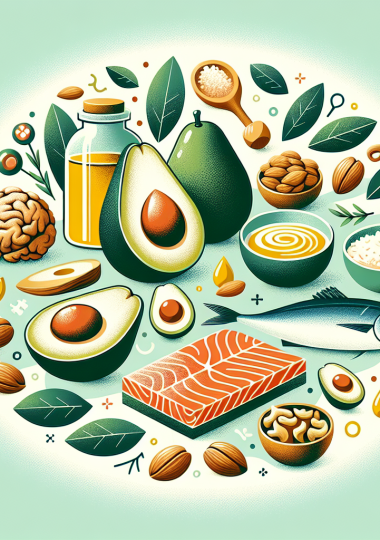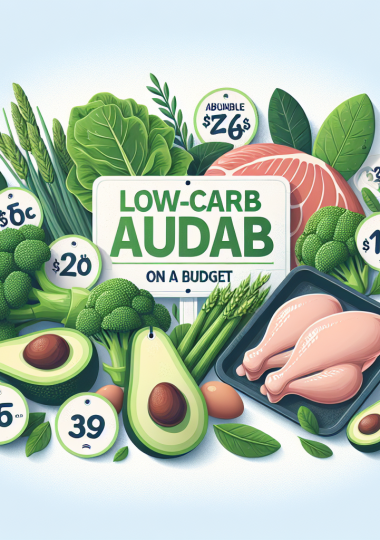Introduction
In the realm of nutrition and dieting, low-carb and ketogenic (keto) diets have gained immense popularity for their potential health benefits and weight loss effects. While both diets prioritize carb reduction, they differ significantly in their approach, macronutrient composition, and physiological impacts. This article delves into these differences, providing a comprehensive overview to help you choose the diet that best suits your lifestyle and health goals.
Understanding Low-Carb Diets
Low-carb diets, as the name suggests, focus on reducing carbohydrate intake. However, the definition of “low-carb” can vary widely. Typically, a low-carb diet involves consuming anywhere from 50 to 150 grams of carbohydrates per day. The primary goal is to decrease carb intake to stimulate weight loss, improve metabolic health, and increase energy levels.
Types of Low-Carb Diets
There are several variations of low-carb diets, including:
– **The Atkins Diet**: This diet is one of the most well-known low-carb diets. It involves four phases, where carb intake is gradually increased from very low to moderate as you approach your goal weight.
– **The South Beach Diet**: Focused on high-protein, low-carb meals, this diet emphasizes healthy fats and lean proteins.
– **The Paleo Diet**: While not strictly low-carb, the Paleo diet reduces high-carb processed foods and emphasizes whole, unprocessed foods.
Benefits of Low-Carb Diets
– **Weight Loss**: By reducing carb intake, the body is forced to burn stored fat for energy, which can lead to weight loss.
– **Improved Metabolic Health**: Low-carb diets may help regulate blood sugar levels and improve insulin sensitivity.
– **Increased Satiety**: Higher protein and fat intake can lead to greater feelings of fullness, reducing overall calorie consumption.
Understanding the Ketogenic Diet
The ketogenic diet is a more restrictive form of low-carb dieting. It involves drastically reducing carb intake to about 20-50 grams per day, with the primary goal of inducing ketosis—a metabolic state where the body burns fat for fuel instead of carbohydrates.
How the Ketogenic Diet Works
When carbohydrate intake is significantly reduced, the liver converts fats into ketones, which serve as an alternative energy source for the brain and body. This process is known as ketosis. Achieving and maintaining ketosis is the central aim of the ketogenic diet.
Macronutrient Composition
– **Carbohydrates**: Typically limited to 5-10% of total daily caloric intake.
– **Proteins**: Moderate intake, usually about 20% of daily calories.
– **Fats**: High intake, comprising 70-75% of daily caloric intake.
Benefits of the Ketogenic Diet
– **Rapid Weight Loss**: The body burns fat at a higher rate, leading to quicker weight loss.
– **Enhanced Mental Clarity**: Some individuals report improved focus and mental clarity while in ketosis.
– **Potential Therapeutic Benefits**: The keto diet has been studied for its potential benefits in treating epilepsy, Alzheimer’s disease, and other neurological disorders.
Key Differences Between Low-Carb and Keto
While both diets reduce carb intake, the degree of restriction and the body’s metabolic response differentiate them.
Carbohydrate Restriction
– **Low-Carb**: Allows a more flexible range of carb intake, making it easier to maintain long-term.
– **Keto**: Requires strict carb limitation to achieve and maintain ketosis, which can be challenging for some.
Metabolic State
– **Low-Carb**: May not always lead to ketosis; the focus is more on reducing insulin levels and losing weight.
– **Keto**: Aims to induce a metabolic state of ketosis, where fat is the primary energy source.
Macronutrient Ratios
– **Low-Carb**: Higher protein intake compared to keto, with moderate fat consumption.
– **Keto**: High fat, moderate protein, and very low carbohydrate intake.
Choosing the Right Diet
Selecting between a low-carb and a keto diet depends on individual health goals, lifestyle preferences, and personal metabolic response.
Who Should Consider a Low-Carb Diet?
– Individuals seeking a more flexible dieting approach.
– Those interested in weight loss without the strict carb restrictions.
– People looking to maintain or improve metabolic health with moderate dietary changes.
Who Should Consider a Keto Diet?
– Individuals aiming for rapid weight loss.
– Those with specific health conditions that may benefit from ketosis, such as epilepsy.
– People willing to adhere to a highly structured and restrictive diet.
Potential Risks and Considerations
Both diets come with potential risks and considerations that should be evaluated before starting.
Low-Carb Diet Risks
– May lead to nutrient deficiencies if not well-planned.
– Possible initial side effects like fatigue, headache, and irritability.
Keto Diet Risks
– May cause “keto flu,” characterized by symptoms such as nausea, headache, and dizziness during initial adaptation.
– Long-term adherence can be challenging and may lead to social and dietary limitations.
Conclusion
Both low-carb and keto diets offer unique benefits and challenges. Understanding the key differences can help you make an informed decision based on your health goals and lifestyle. Whether you choose the more flexible low-carb approach or the stricter ketogenic path, it’s essential to focus on nutritious, whole foods and consult with a healthcare professional or a dietitian to ensure you’re meeting your nutritional needs.
Final Thoughts
Remember, there’s no one-size-fits-all approach to dieting. What works for one person may not work for another. Listen to your body, monitor your progress, and make adjustments as needed to find the dietary approach that best supports your health and well-being.









Add comment